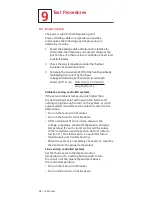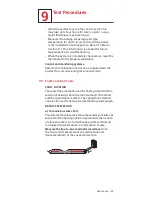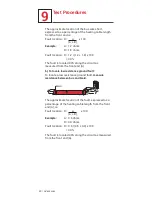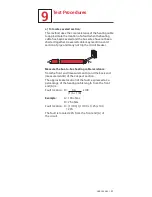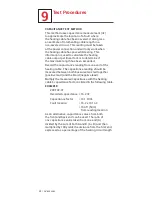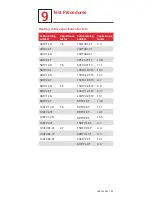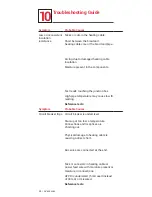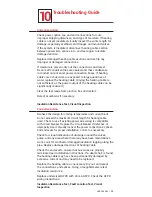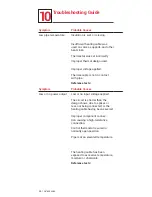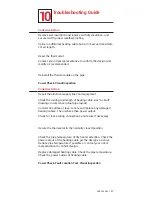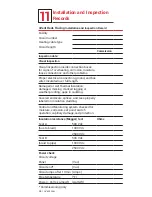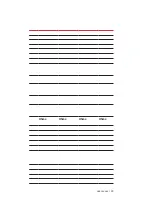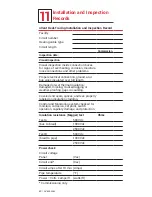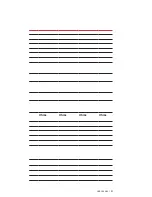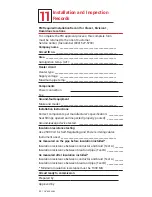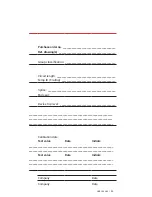
Troubleshooting Guide
10
34 | nVent.com
Symptom
Probable Causes
Corrective Action
Low or inconsistent
insulation
resistance
Nicks or cuts in the heating cable.
Short between the braid and
heating cable core or the braid and pipe.
Check power, splice, tee, and end connections for cuts,
improper stripping distances, and signs of moisture. If heating
cable is not yet insulated, visually inspect the entire length for
damage, especially at elbows and flanges and around valves.
If the system is insulated, disconnect heating cable section
between power kits, splices, etc., and test again to isolate
damaged section.
Arcing due to damaged heating cable
insulation.
Replace damaged heating cable sections and restrip any
improper or damaged connections.
Moisture present in the components.
If moisture is present, dry out the connections and retest.
Be sure all conduit entries are sealed, and that condensate
in conduit cannot enter power connection boxes. If heating
cable core or bus wires are exposed to large quantities of
water, replace the heating cable. (Drying the heating cable is
not sufficient, as the power output of the heating cable can be
significantly reduced.)
Test leads touching the junction box.
Clear the test leads from junction box and restart.
High pipe temperature may cause low IR
reading.
Retest at ambient, if necessary.
Reference tests:
Insulation Resistance Test, Visual Inspection
Symptom
Probable Causes
Corrective Action
Circuit breaker trips Circuit breaker is undersized.
Start-up at too low a temperature.
Connections and/or splices are
shorting out.
Recheck the design for startup temperature and current loads.
Do not exceed the maximum circuit length for heating cable
used. Check to see if existing power wire sizing is compatible
with circuit breaker. Replace the circuit breaker if defective or
improperly sized. Visually inspect the power connections, splices,
and end seals for proper installation; correct as necessary.
Physical damage to heating cable is
causing a direct short.
Check for visual indications of damage around the valves,
pump, and any area where there may have been maintenance
work. Look for crushed or damaged insulation lagging along the
pipe. Replace damaged sections of heating cable.
Bus wires are connected at the end.
Check the end seal to ensure that bus wires are properly
terminated per installation instructions. If a dead short is found,
the heating cable may have been permanently damaged by
excessive current and may need to be replaced.
Nick or cut exists in heating cable or
power feed wire with moisture present or
moisture in connections.
Replace the heating cable, as necessary. Dry out and reseal
the connections and splices. Using a megohmmeter, retest
insulation resistance.
GFPD is undersized (5 mA used instead
of 30 mA) or miswired.
Replace undersized GFPD with 30 mA GFPD. Check the GFPD
wiring instructions.
Reference tests:
Insulation Resistance Test, Fault Location Test, Visual
Inspection









